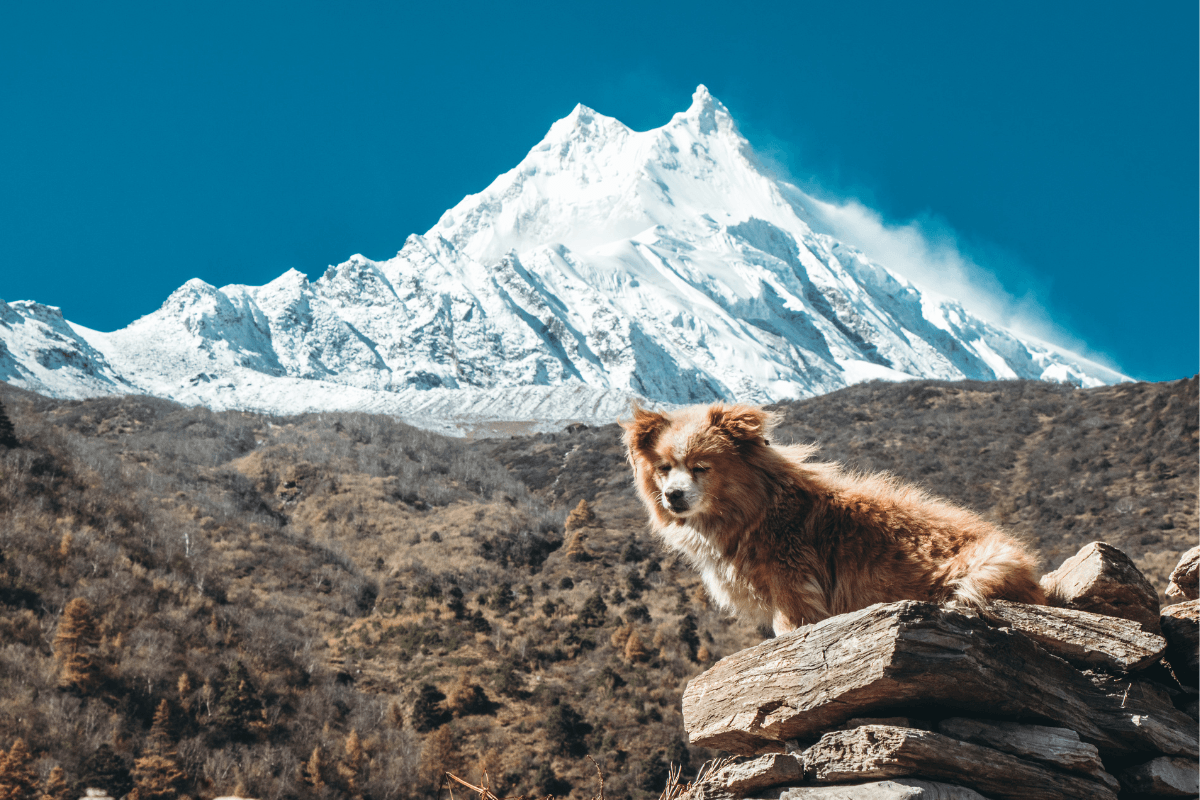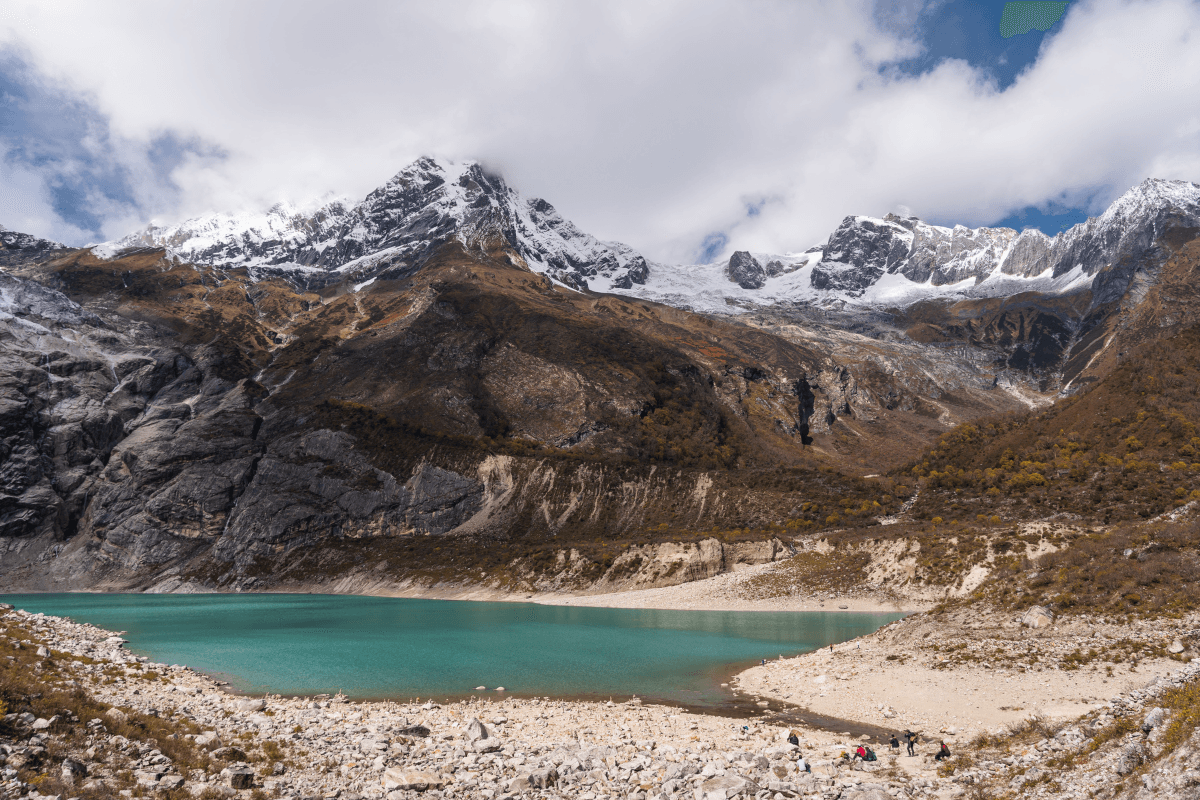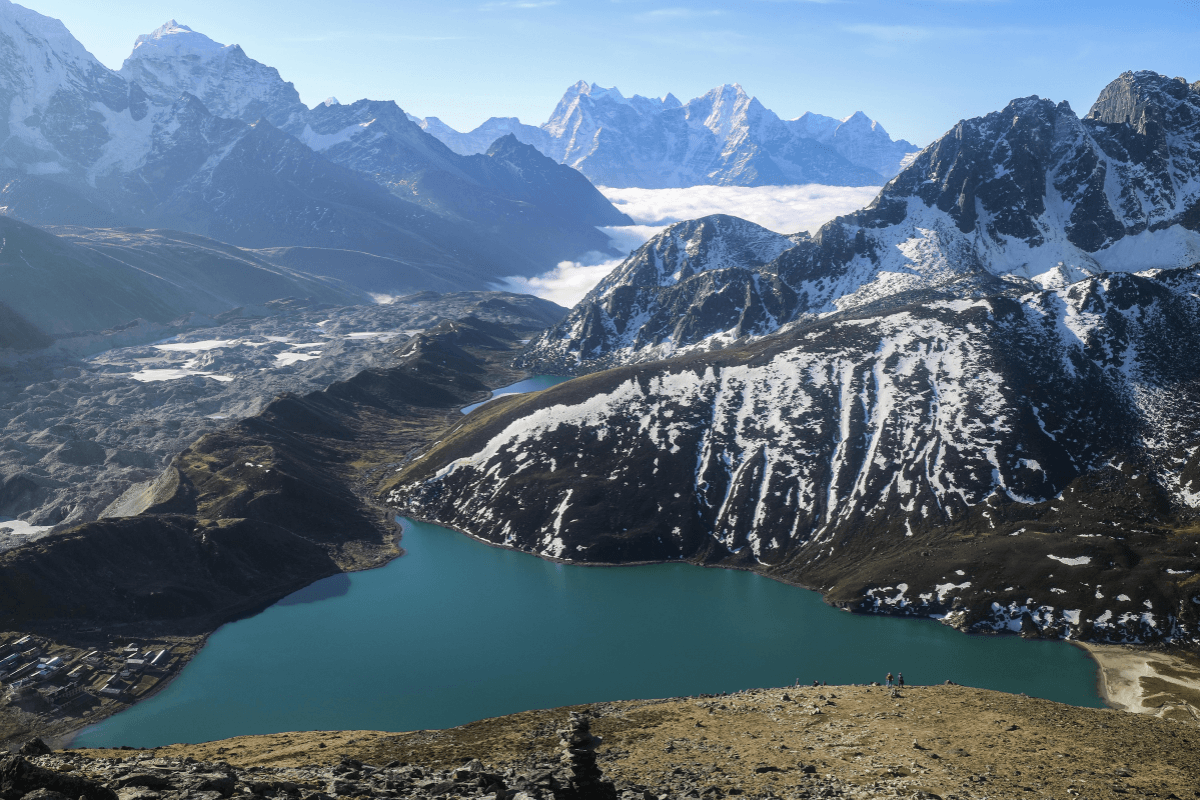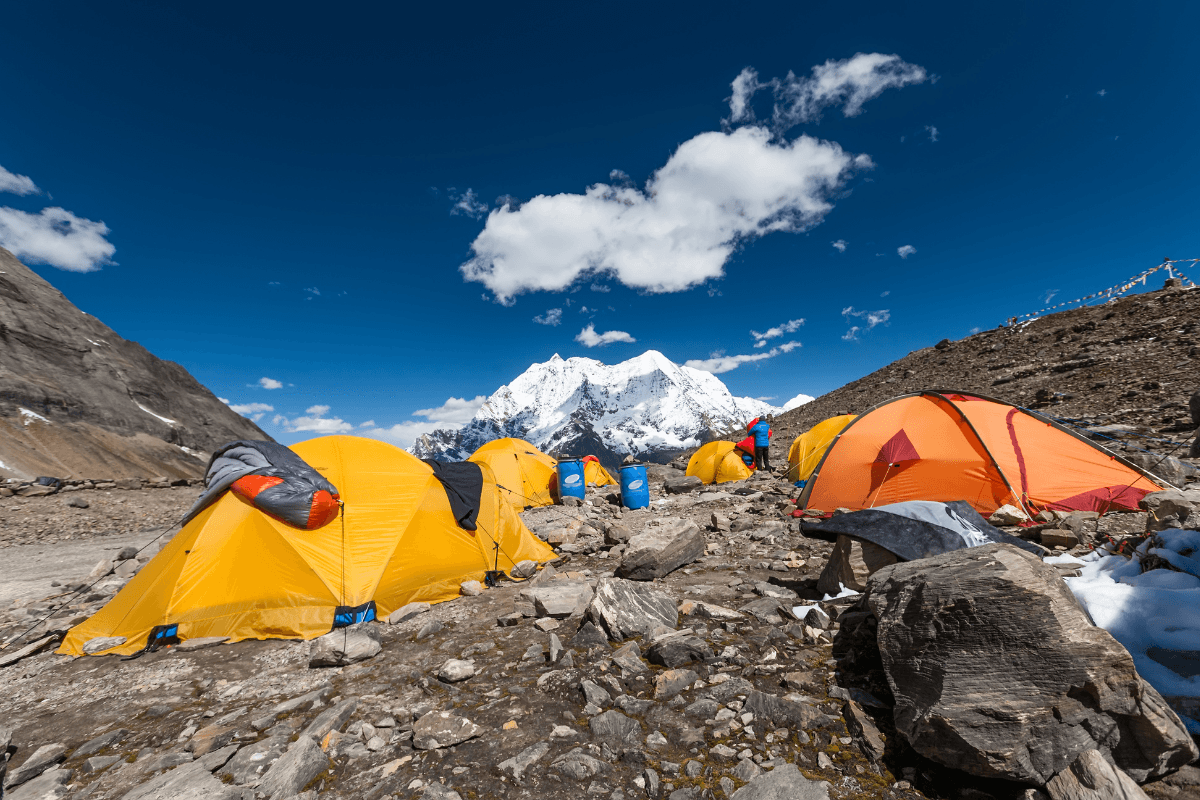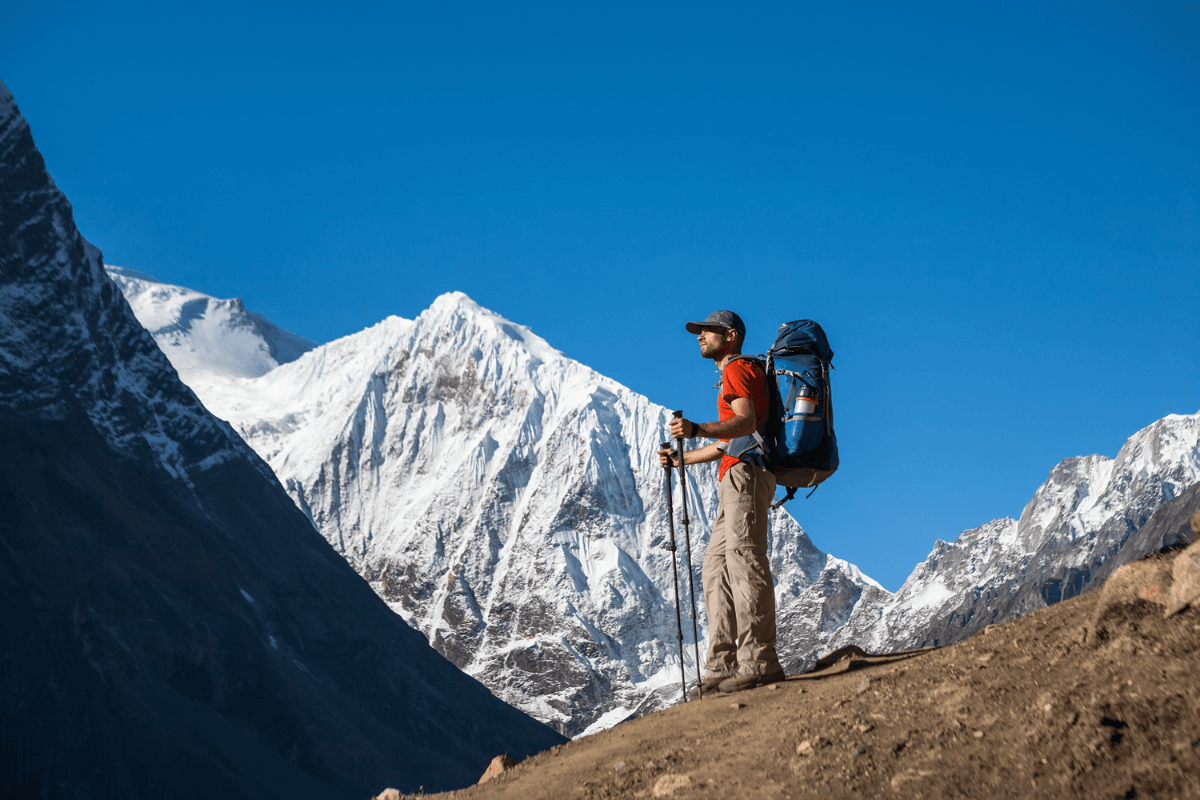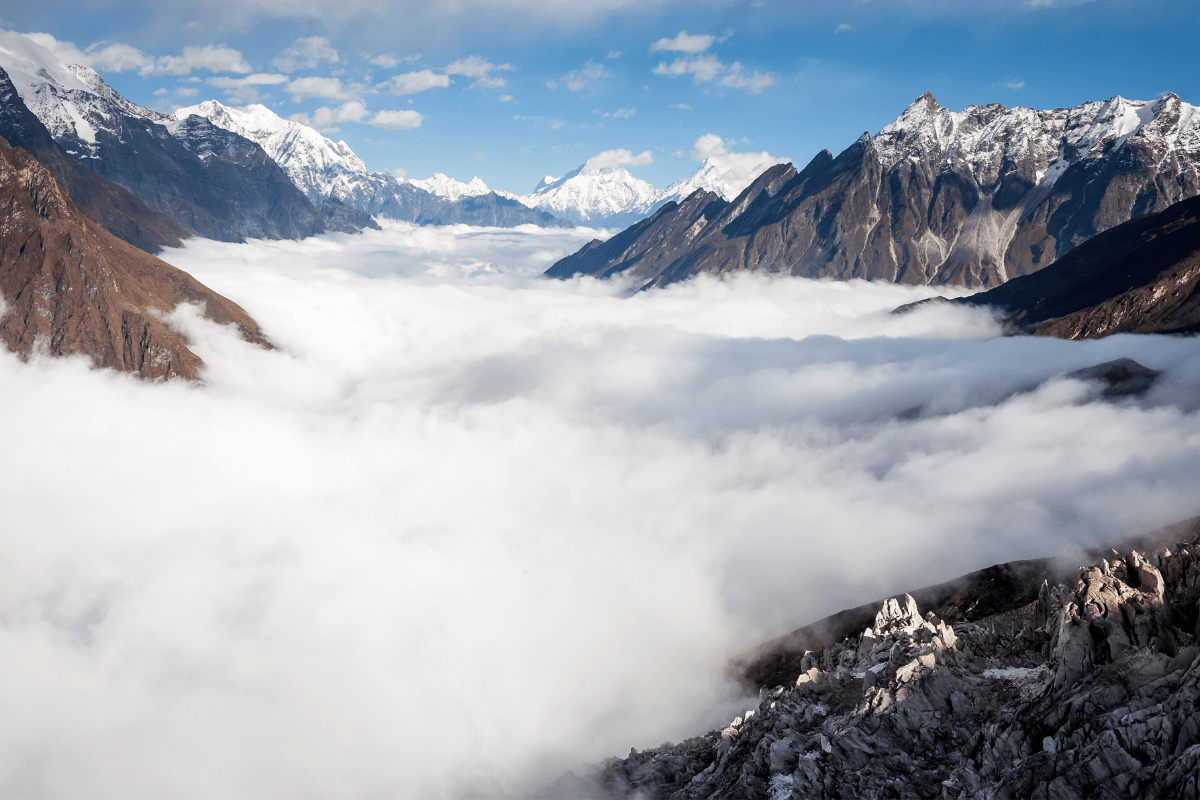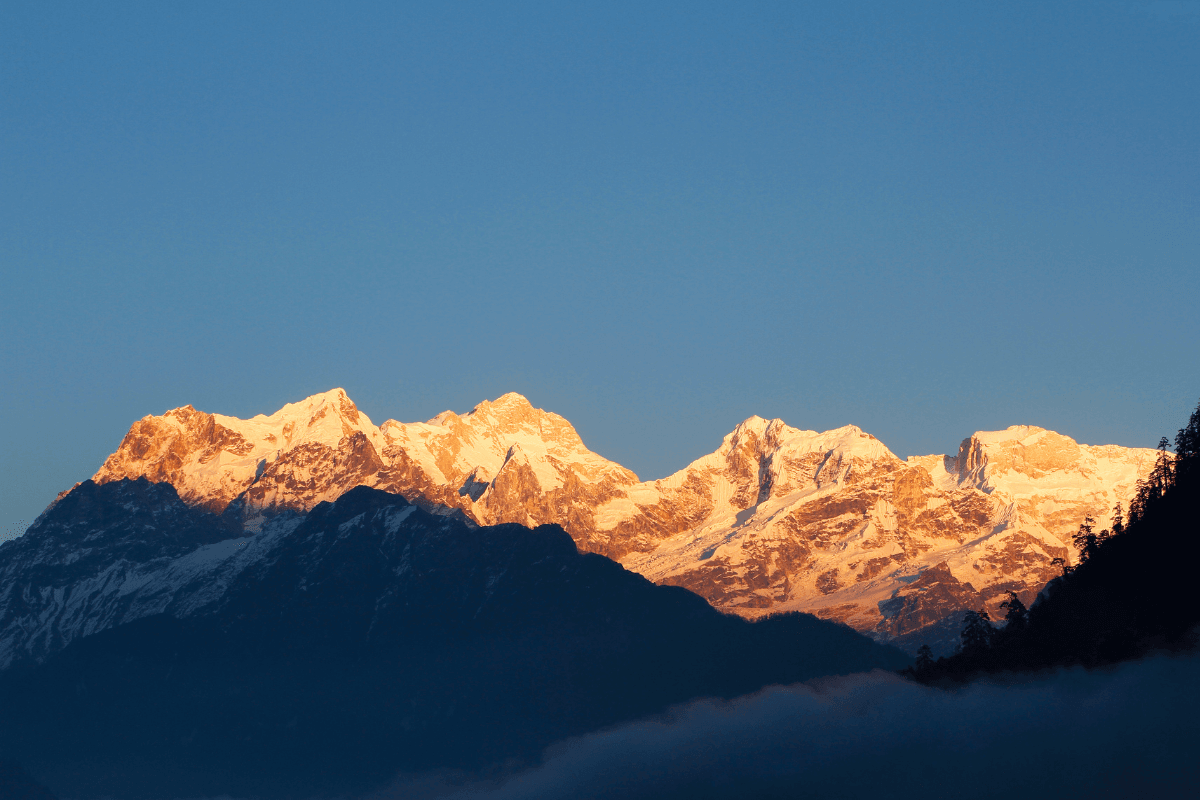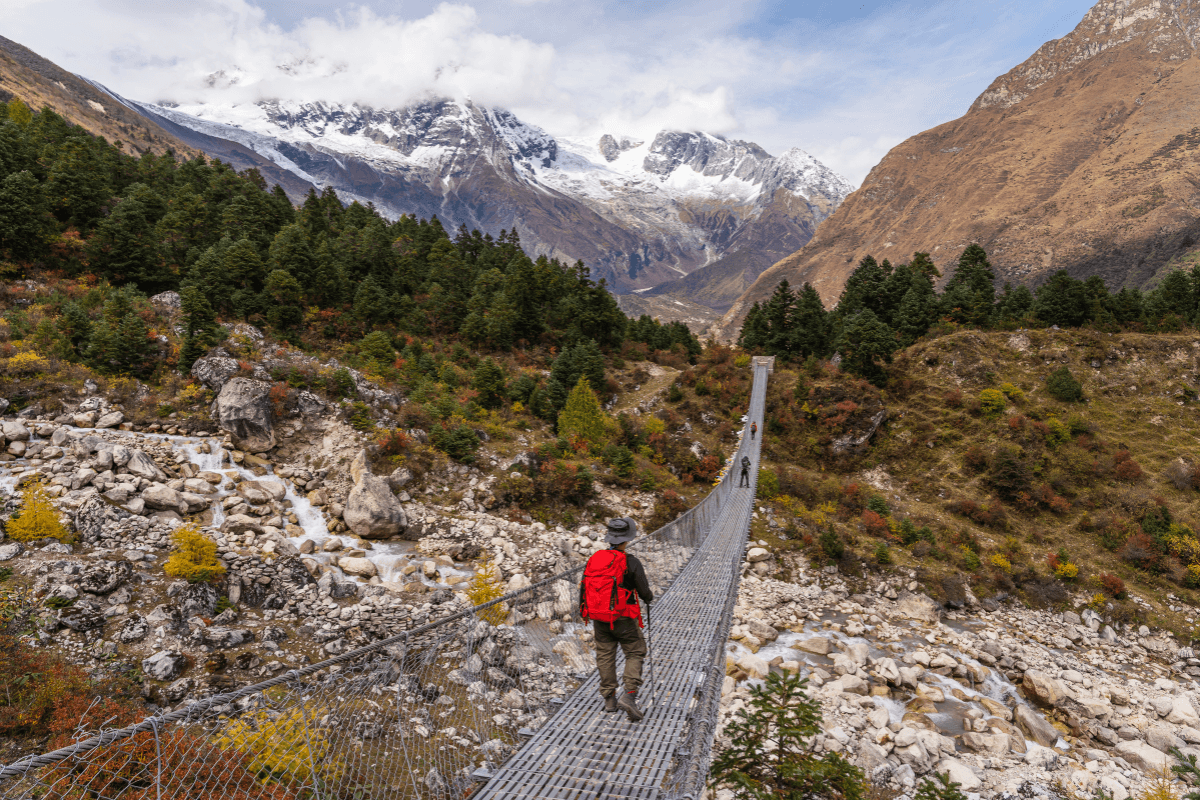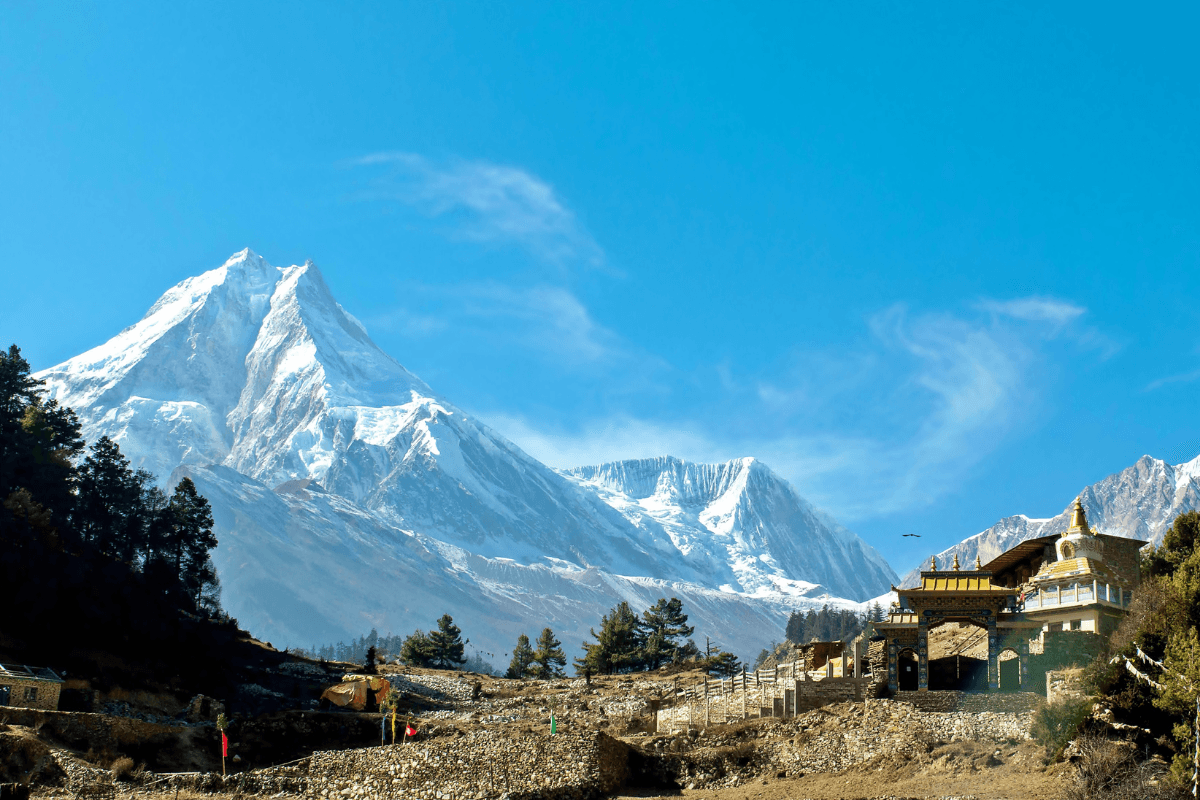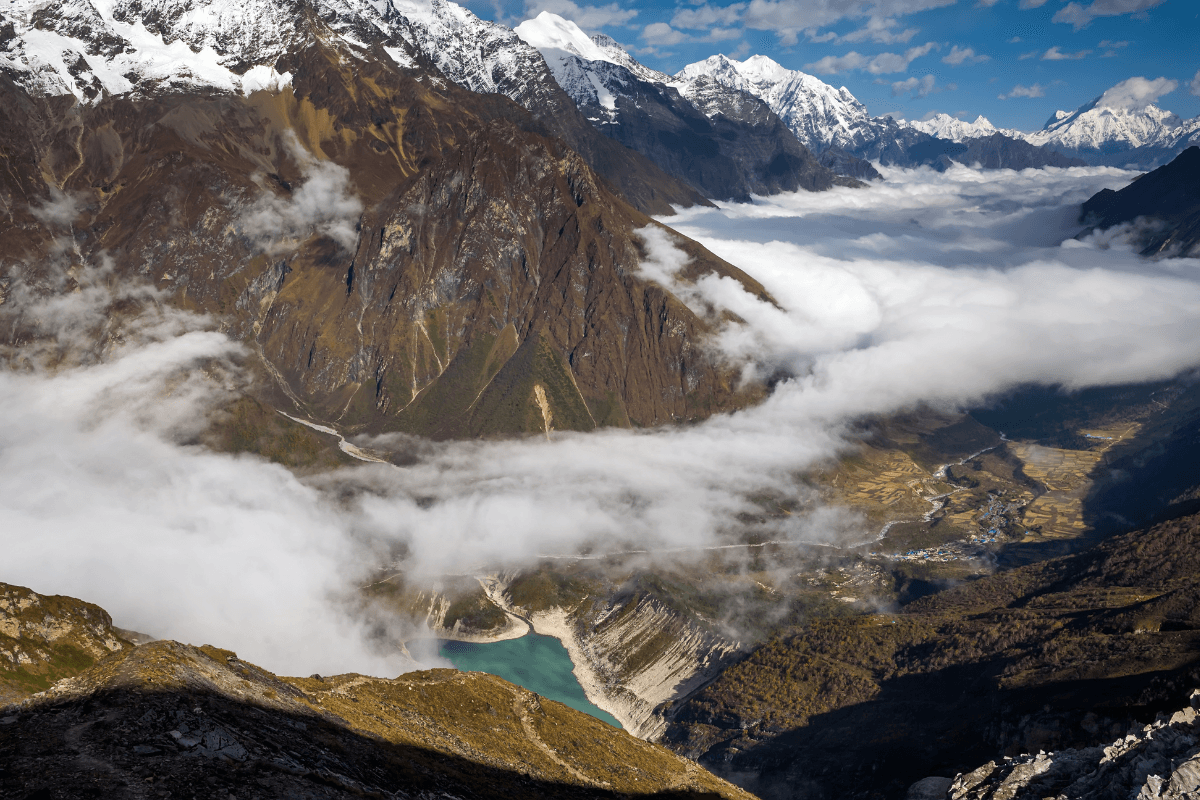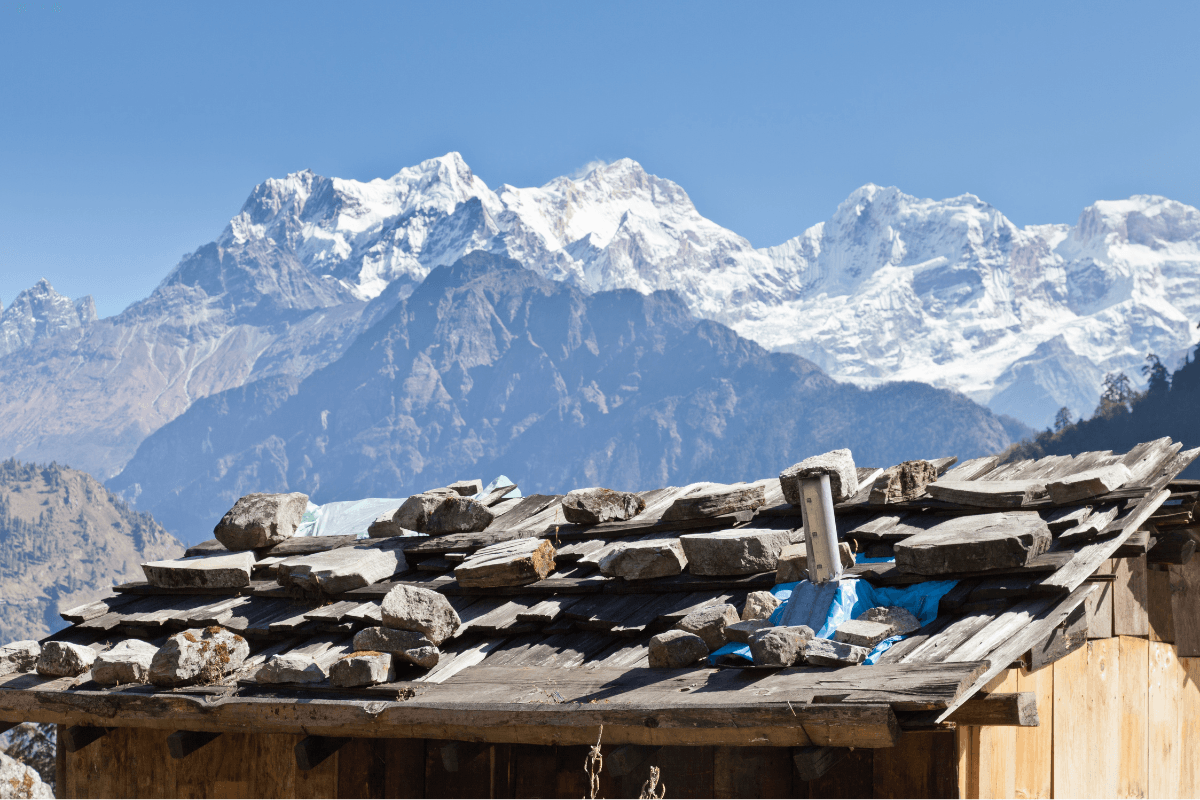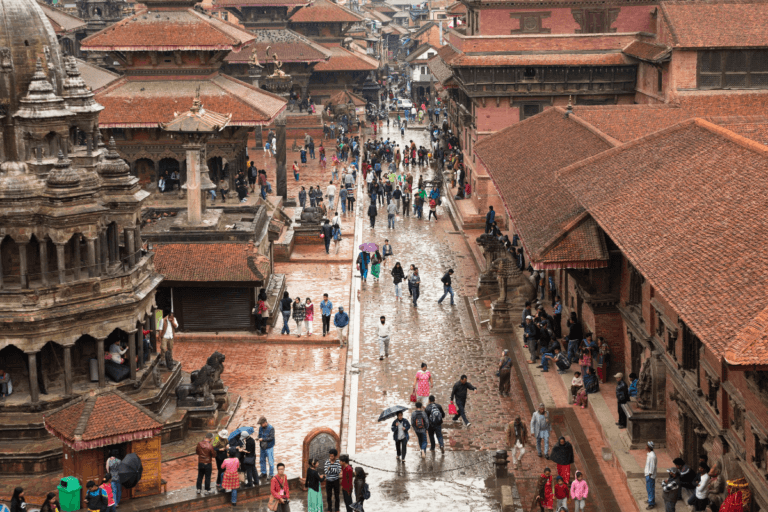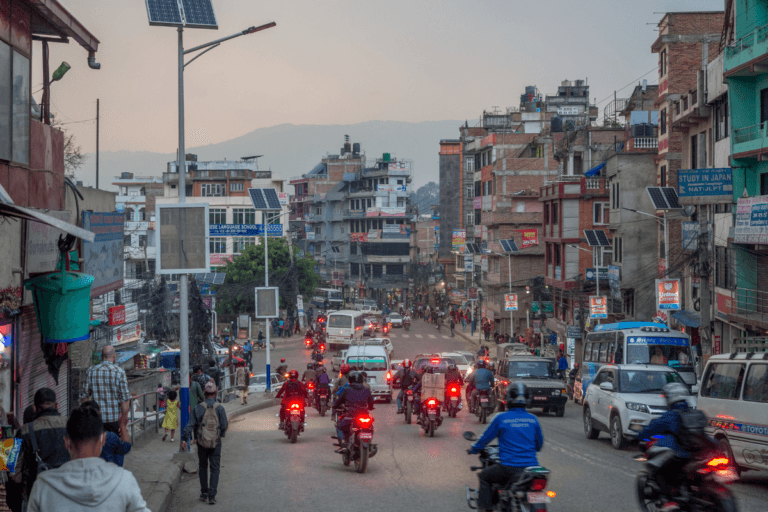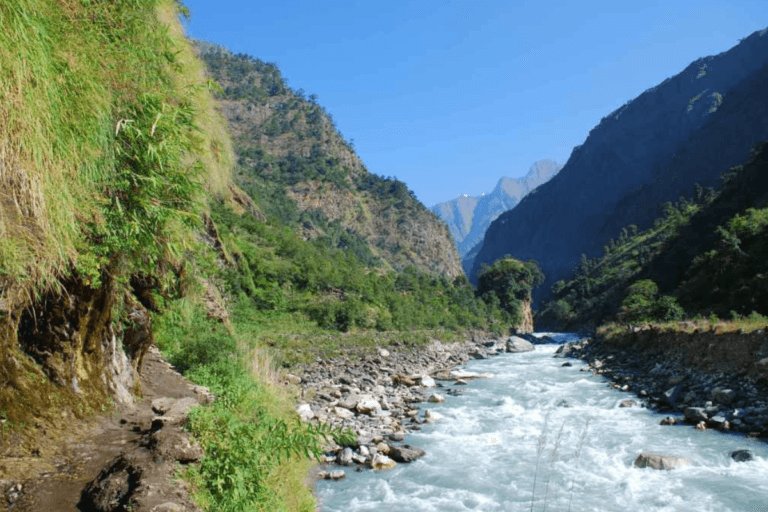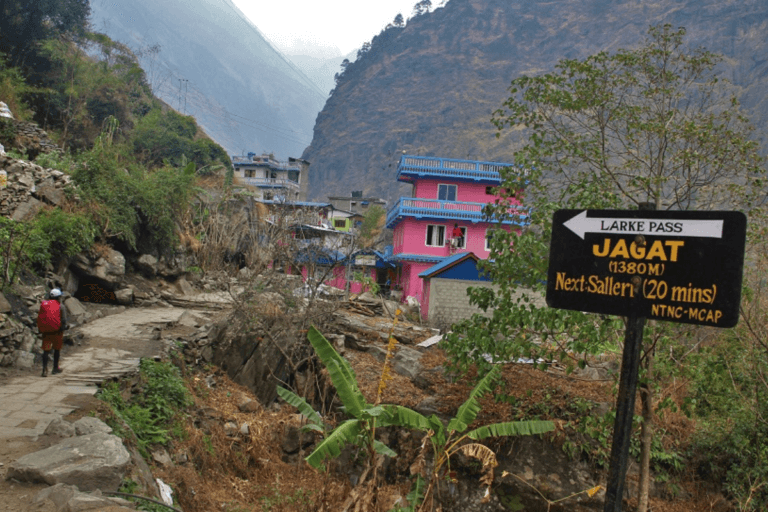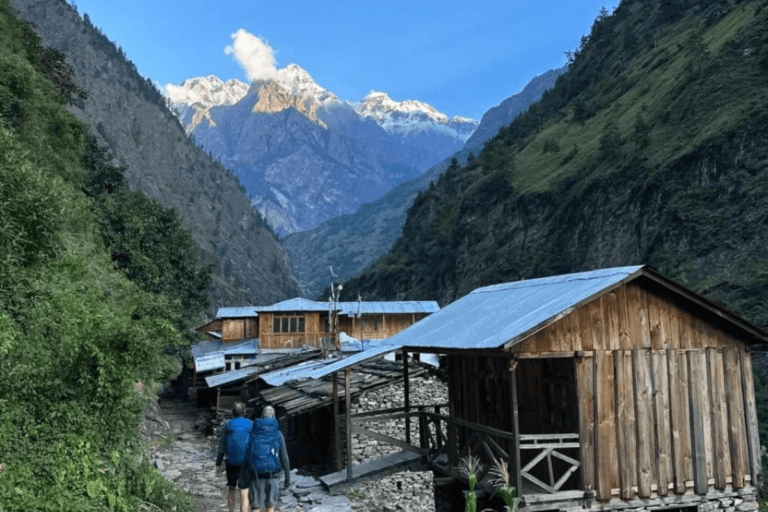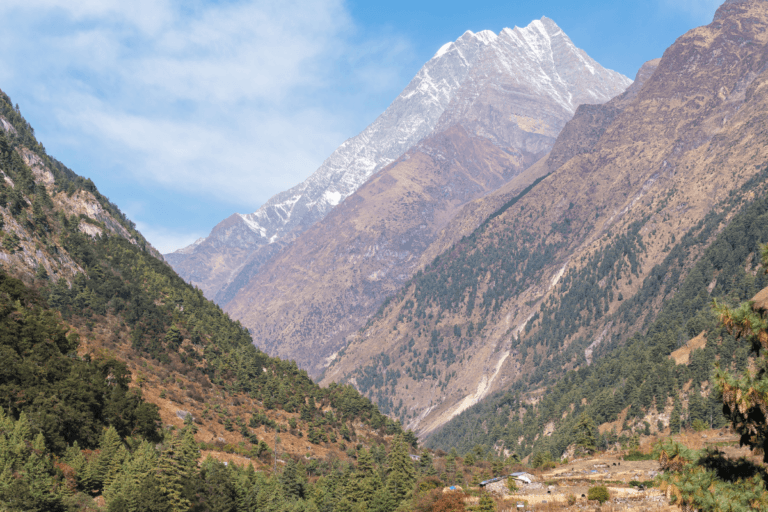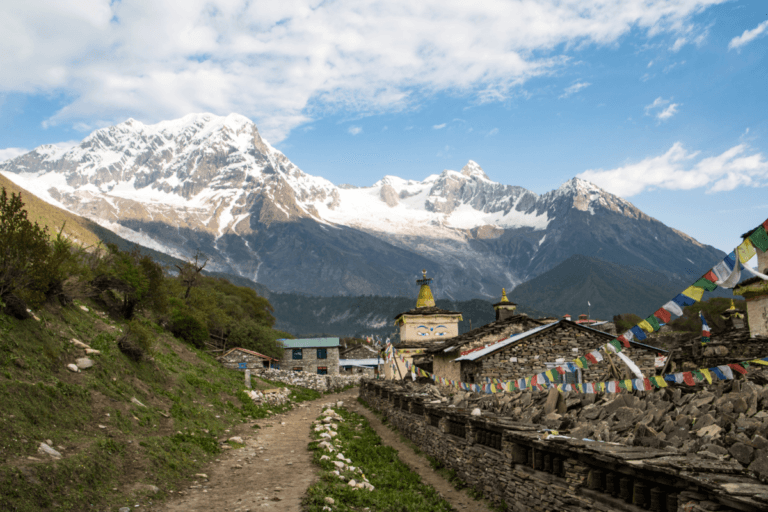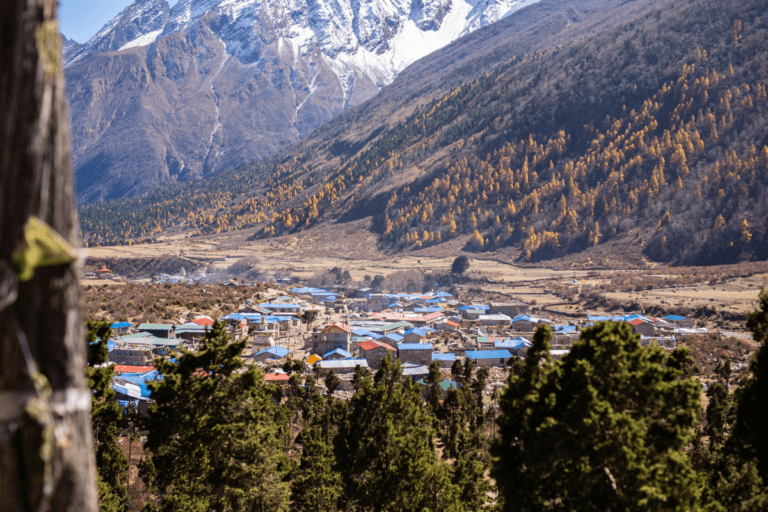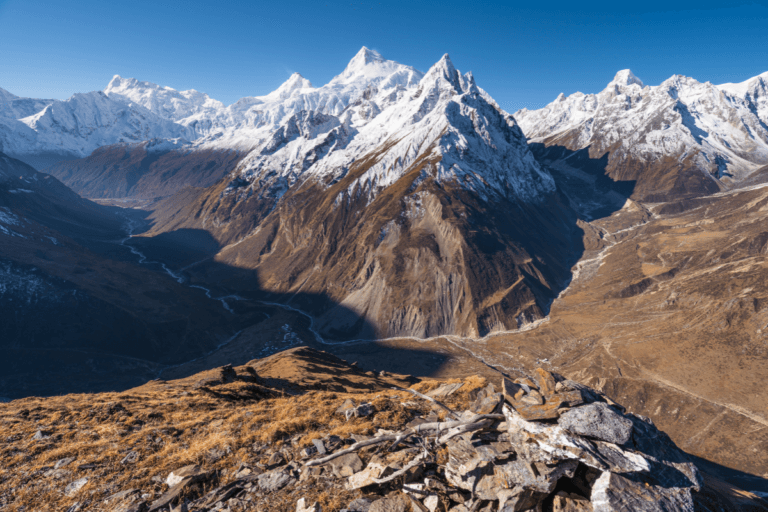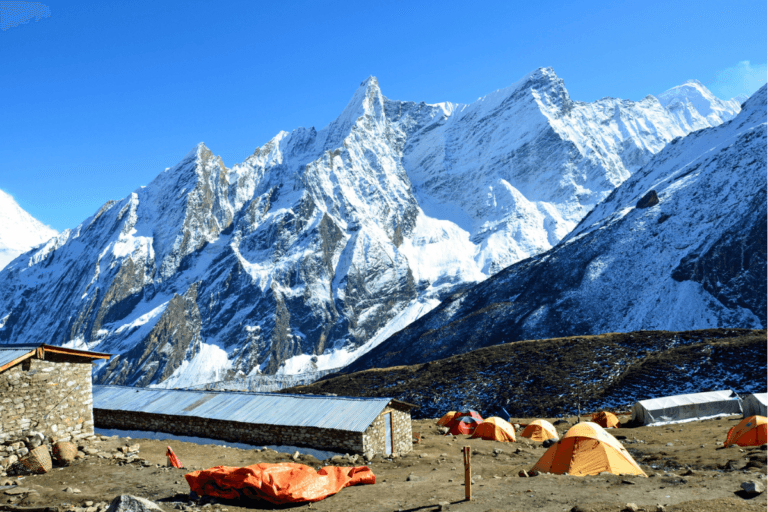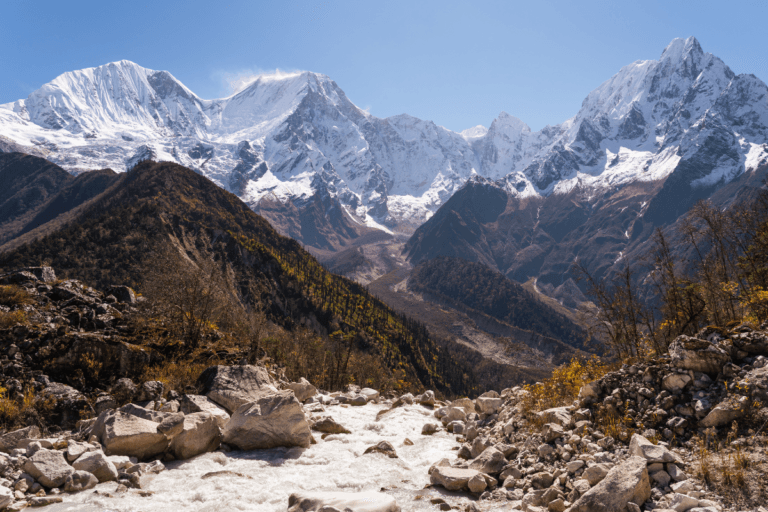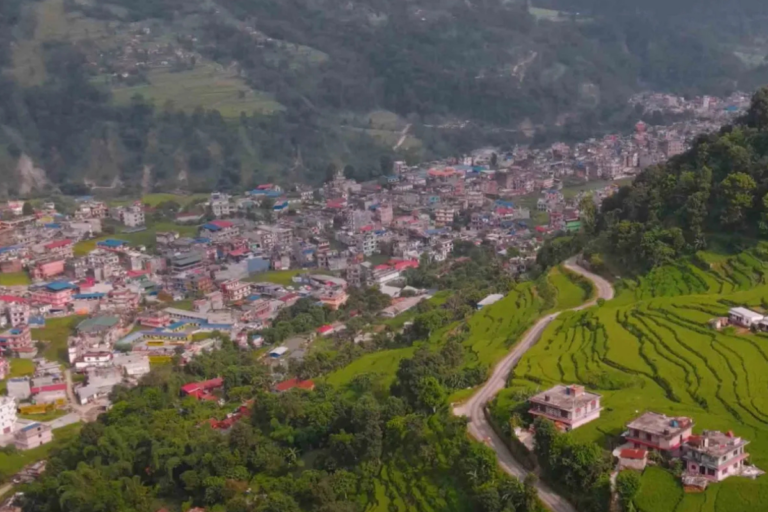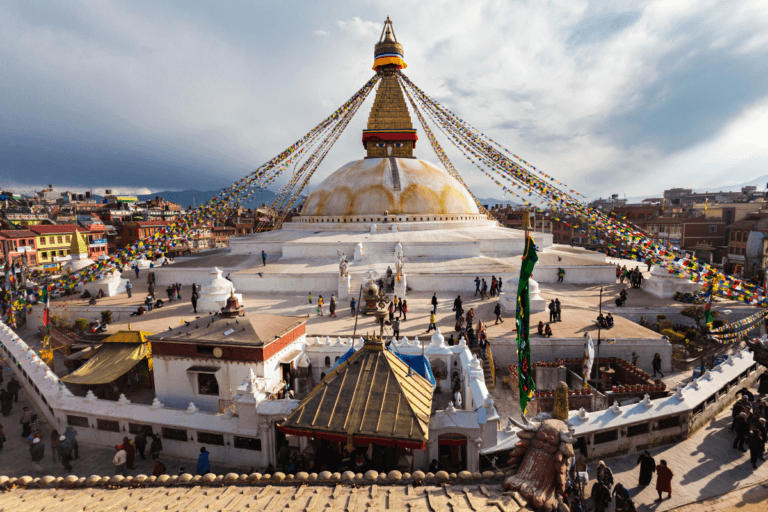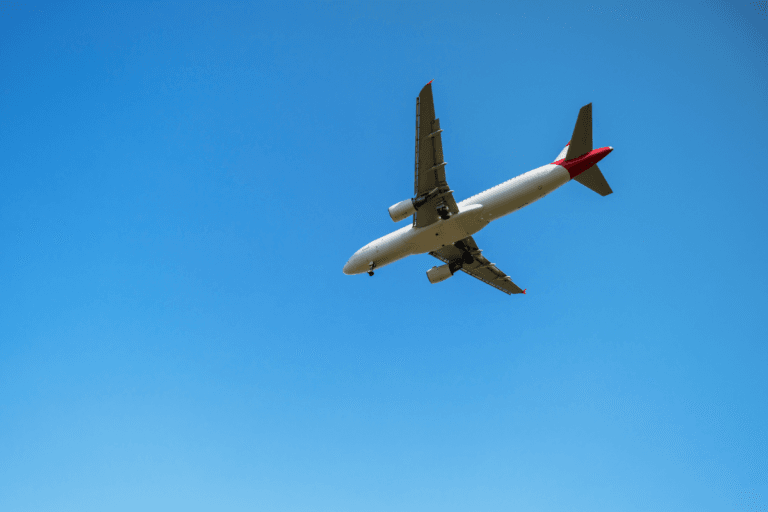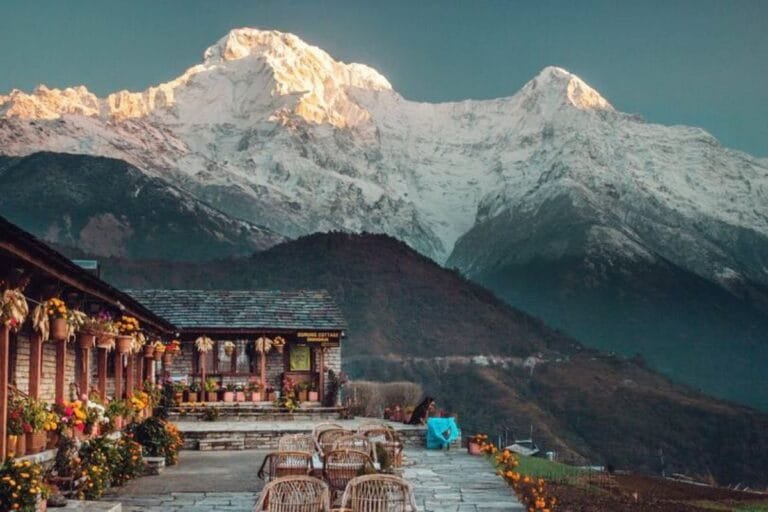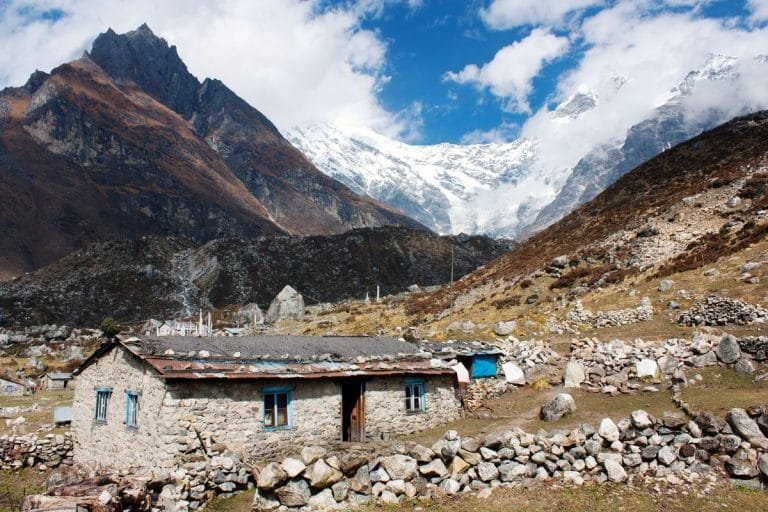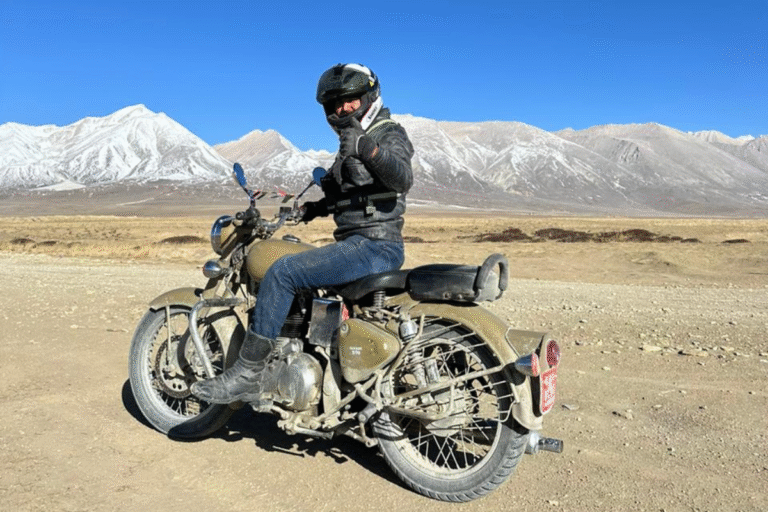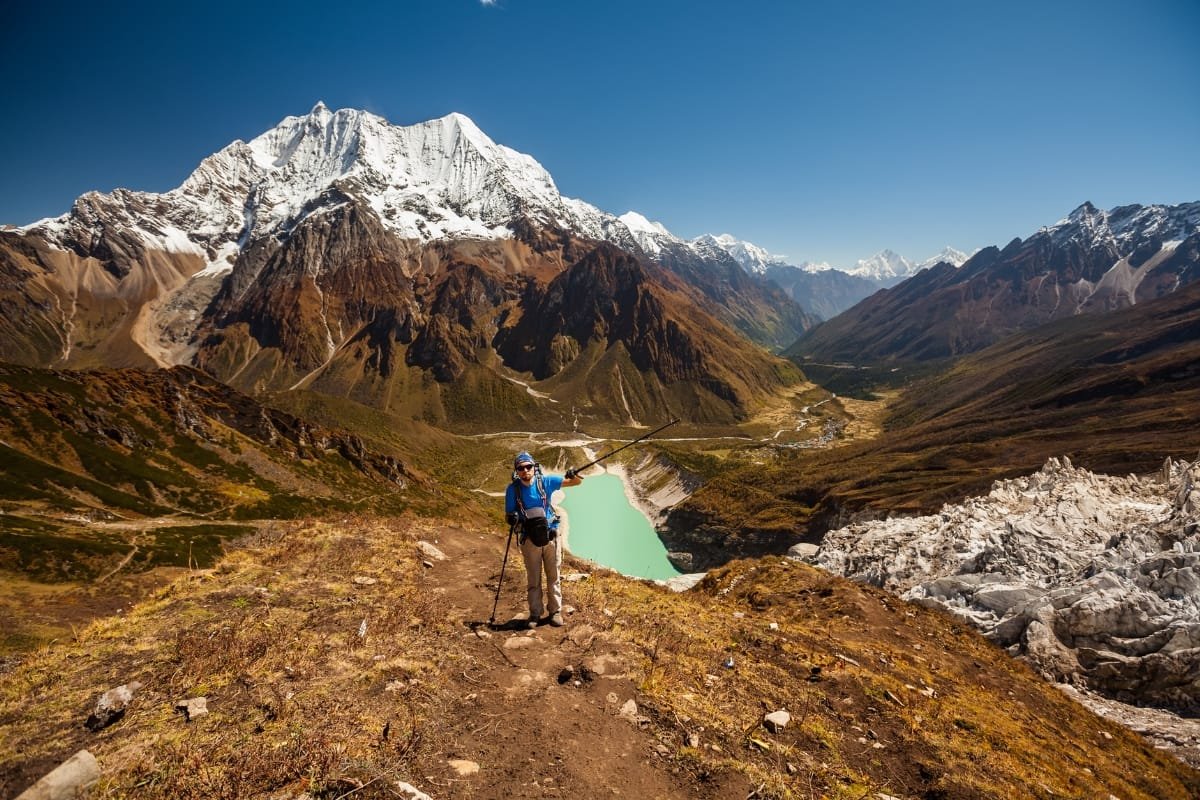The Manaslu Circuit Trek is one of Nepal’s most spectacular and rewarding treks, offering breathtaking Himalayan views, remote trails, diverse landscapes, and rich Tibetan culture. This challenging yet rewarding trek takes you around Mt. Manaslu (8,163m)—the eighth-highest peak in the world—providing an off-the-beaten-path adventure in Nepal.
Compared to the popular Everest Base Camp and Annapurna Circuit treks, the Manaslu Circuit is less crowded yet equally stunning, making it perfect for trekkers looking for a more authentic Himalayan experience. The trek follows the Budi Gandaki River, passing through lush forests, terraced fields, deep gorges, and traditional Gurung villages, before reaching the high-altitude landscapes near the Larkya La Pass (5,160m)—one of the most dramatic mountains passes in Nepal.
This 14-day Manaslu trek offers mesmerizing views of Mt. Manaslu, Himalchuli, Ngadi Chuli, and Ganesh Himal, along with a deep dive into Tibetan Buddhist culture. Along the trail, trekkers encounter ancient monasteries, colorful prayer flags, mani walls, and yak pastures, showcasing the region’s rich heritage. The Manaslu region is part of the Manaslu Conservation Area, home to diverse wildlife, including snow leopards, Himalayan tahr, and red pandas.
Best time to trek? The autumn season (September to November) and spring (March to May) offer the best conditions, with clear skies and stable weather. Since this trek enters a restricted area, trekkers need a special permit and must be accompanied by a licensed guide.
The Manaslu Circuit Trek is ideal for those seeking an epic Himalayan adventure with fewer crowds, challenging terrains, and jaw-dropping mountain scenery. If you’re an experienced trekker or an adventure enthusiast, this journey will leave you with unforgettable memories of Nepal’s remote and untouched landscapes.
- Final gear check and equipment shopping (if needed)
- Obtain Manaslu Restricted Area Permit & TIMS Card
- Optional sightseeing tour of Kathmandu’s UNESCO sites (Pashupatinath, Swayambhunath, or Boudhanath) (In request)
- Rest and preparation for the long journey ahead
- Scenic drive via Prithvi Highway and Arughat along the Budi Gandaki River
- Enjoy views of green hills, waterfalls, and traditional villages
- Pass through Soti Khola and Khursane, witnessing rural Nepalese lifestyle
- Overnight stay at a teahouse in Machha Khola
- Walk through rhododendron and fir forests, passing Tibetan-influenced villages
- Enjoy breathtaking views of Mt. Manaslu, Himal Chuli, and Ganesh Himal
- Pass through Lho village, where you can visit Ribung Gompa monastery
- Continue trekking through Shyala village, then reach Samagaon, the largest village on the trek
- Early morning ascent to Larkya La Pass, the highest point of the trek
- Stunning views of Himlung Himal, Cheo Himal, Kang Guru, and Annapurna II
- Steep descent through rocky trails to Bimthang
- Overnight stay in Bimthang, a scenic glacial valley
- Descend through lush forests, crossing suspension bridges and streams
- Walk past Yak Kharka and Karche, with stunning Himalayan views
- Reach Tilche village, marking the end of the trekking route
- Take a jeep drive from Tilche to Besisahar, passing through mountain roads
The Manaslu Circuit Trek falls under a restricted region, requiring a Manaslu Restricted Area Permit (RAP), Manaslu Conservation Area Permit (MCAP), and Annapurna Conservation Area Permit (ACAP).
Trekking in this region requires a minimum of two trekkers accompanied by a licensed trekking guide. Solo trekking is not allowed.
Your original passport, valid visa, and passport-sized photos are necessary to obtain permits.
The ideal seasons for trekking are Spring (March-May) and Autumn (September-November). These months offer clear skies, stable weather, and breathtaking mountain views.
Winter (December-February) can be extremely cold, with heavy snowfall, making Larkya La Pass (5,160m) difficult to cross.
Monsoon (June-August) brings heavy rains, leeches, and landslides, making trails slippery and less scenic.
The Manaslu Circuit is a challenging trek, covering long trekking hours (6-8 hours per day), steep ascents/descents, and high-altitude sections.
Proper physical fitness is essential—prior hiking experience, endurance training, and cardio exercises (such as running, cycling, or swimming) are highly recommended.
If you have conditions like asthma, heart disease, or altitude sickness history, consult a doctor before attempting the trek.
The trek reaches a maximum altitude of 5,160m (Larkya La Pass), increasing the risk of Acute Mountain Sickness (AMS).
Symptoms of AMS include headache, nausea, dizziness, shortness of breath, and loss of appetite.
The itinerary includes acclimatization days in Samagaon (3,530m) to help adjust to the high altitude.
Stay hydrated, ascend gradually, and avoid alcohol to minimize altitude sickness risk.
- Proper trekking gear is crucial for a successful and comfortable trek. Essential items include:
- Clothing: Moisture-wicking base layers, insulated jackets, waterproof layers, gloves, and warm socks.
- Footwear: Well-broken-in trekking boots with ankle support.
- Accessories: UV-protection sunglasses, sunblock, trekking poles, and a good-quality backpack.
- Sleeping Gear: A 4-season sleeping bag is recommended for cold nights.
- First Aid Kit: Include personal medications, altitude sickness tablets, and blister care.
Accommodation is in basic teahouses, with shared rooms and common bathrooms. Higher altitudes have limited facilities.
Food options include traditional Nepali meals (dal bhat), noodles, soups, pancakes, and tea/coffee. Availability of Western dishes decreases at higher altitudes.
Hot showers may be available at some teahouses for an extra cost.
Wi-Fi is available in some teahouses but is slow and expensive at higher altitudes.
Mobile network coverage is unreliable in remote areas. A local SIM card (NCELL/Nepal Telecom) with data can help in lower regions.
Charging facilities are available in lodges for an additional fee. Carrying a power bank is highly recommended.
Hiring a licensed trekking guide ensures safety, navigation, and better cultural insights.
Porters can carry up to 20-25kg of luggage, allowing trekkers to hike with just a daypack.
Comprehensive travel insurance covering high-altitude trekking (above 5,000m), medical evacuation, and trip cancellation is mandatory.
Extra expenses include hot showers, charging electronics, Wi-Fi, bottled water, and snacks.
ATM services are not available along the trekking route, so carry enough Nepali cash (NPR) for personal expenses.
- Airport pick-up and drop-off
- Kathmandu–Machha Khola & Tilchei–Kathmandu transportation
- All necessary trek permits (MCAP, ACAP, RAP)
- Licensed trekking guide & porter (1 porter per 2 trekkers)
- Teahouse accommodations during the trek
- All meals (Breakfast, Lunch, and Dinner) during the trek
- Government taxes and service charges
- International flights
- Nepal visa fees
- Personal expenses (extra snacks, drinks, hot showers, battery charging, etc.)
- Travel and rescue insurance (highly recommended)
- Tips for guide, porter, and driver
- Additional stays in Kathmandu due to early arrival, delays, or personal reasons
Popular Packages
Help & Support
Share This Package
Contact Us
At FroxHolidays, we go beyond travel - we personalize your journey. By understanding your unique preferences, we ensure every detail is tailored just for you.
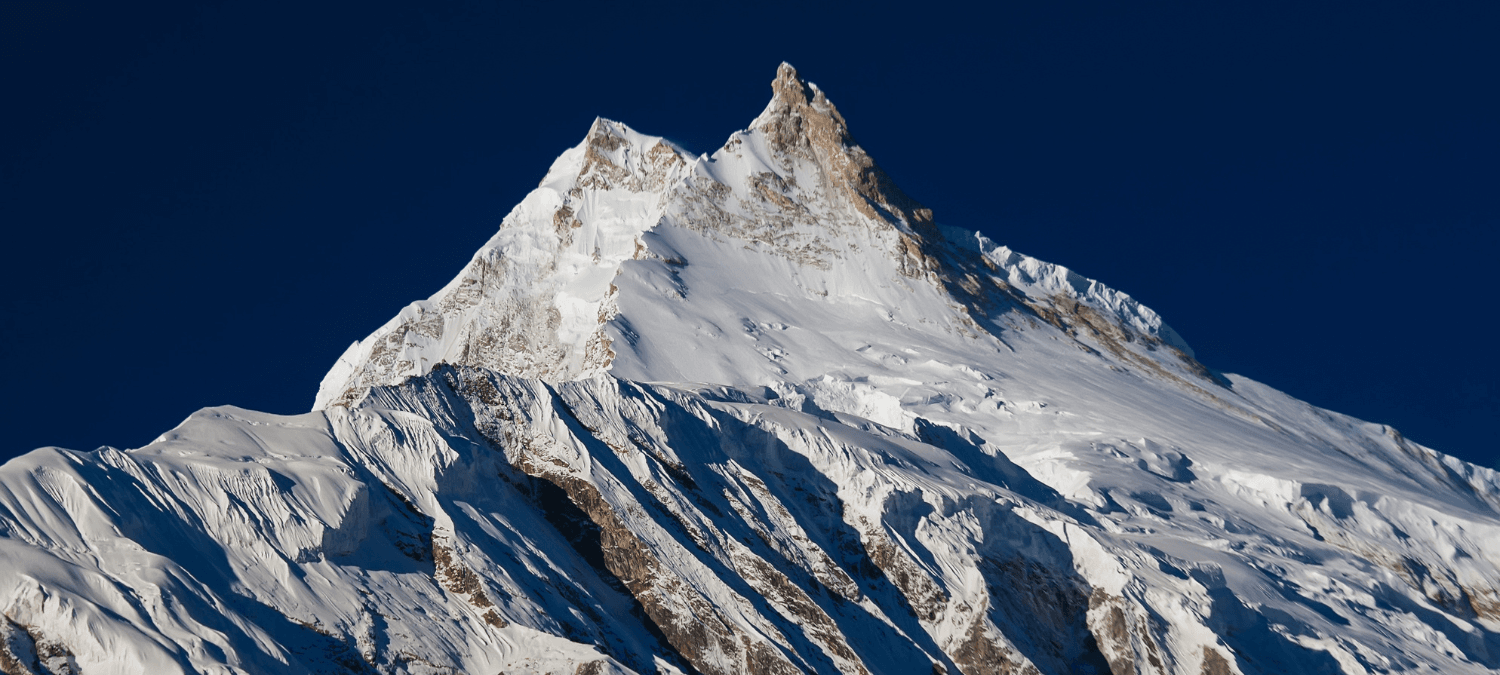
Instagram Feed
See our latest instagram feed
